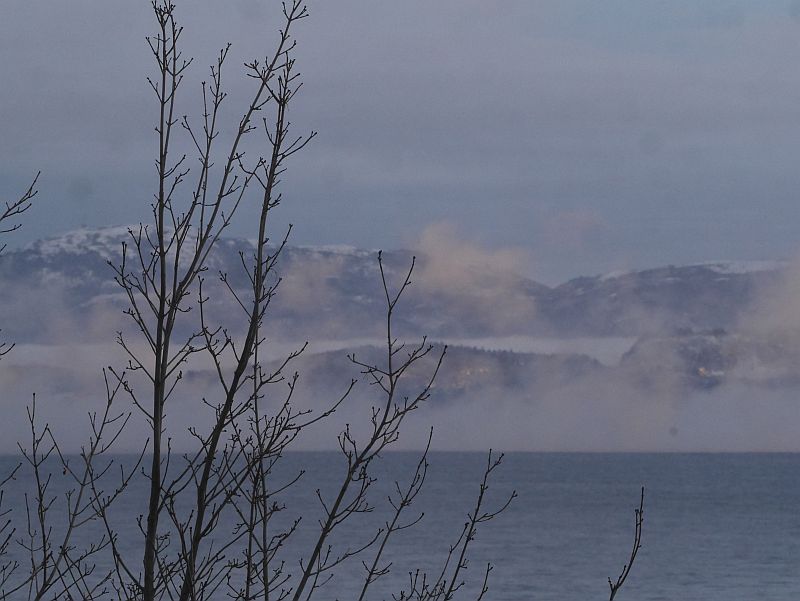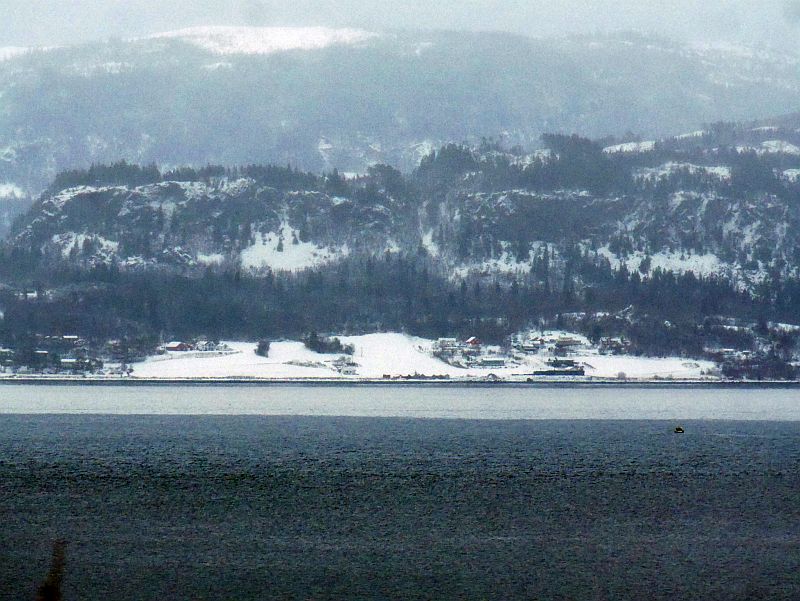





A few day’s later, following on from my post on Old Man’s Beard! https://www.edimentals.com/blog/?p=27221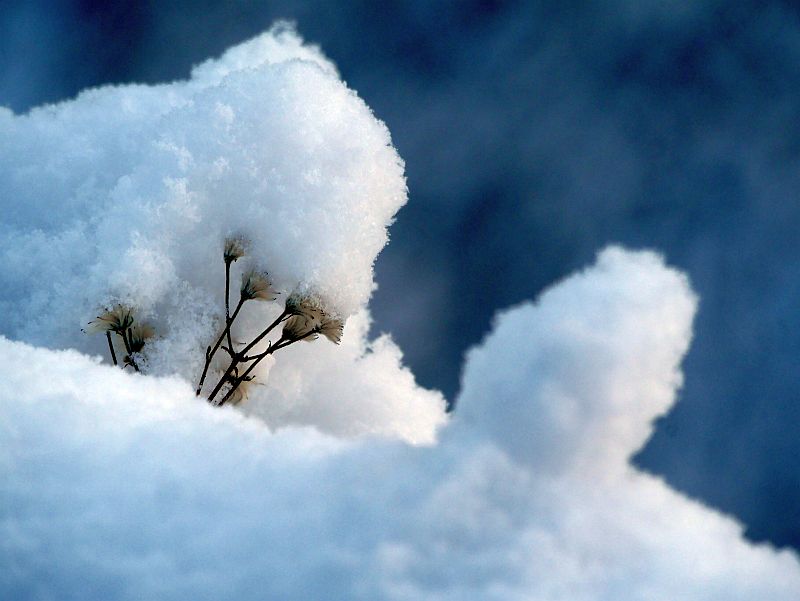


Kales (Brassica oleracea) have a reputation for being really hardy, but in reality there are many perennial vegetables that are far more hardy. I mean, kales don’t really make much effort to protect themselves, remaining green all winter and in a normal winter here all my kales would die. However, in areas with mild winters, they are useful as they can be harvested all winter outside. Most perennials die back to the roots and reshoot in spring. Sea kale (Crambe maritima) is one example of this and is thus easier to overwinter. A dream of the perennial kale breeder is a variety that is capable of reshooting from the roots or at least from low down on the plant.
The last couple of winters have been very mild with hardly any frost all winter and almost all my kales have survived (the exception being less hardy Tree collards from California). This winter has been significantly colder and the air temperature has only been above zero C since New Year for a short period. I was prepared for this and spread a thick layer of leaves around the roots to stop the soil freezing around the roots with either jute, spruce branches or planks over to stop the leaves blowing away in winter storms.
In addition, I always take cuttings which I overwinter in a cold room in the house. Almost 100% of cuttings are successful.
You’ll find old man’s beard or tysk klematis in Norwegian (Clematis vitalba) in Italian foraging books as the young cooked shoots are popular there in spring (they shouldn’t be eaten raw). There’s a very narrow time window for harvesting this, so I seldom eat much of it. However, it doubles as being an exceptoionally popular plant for pollinating insects (hoverflies and drone flies in particular) when it is in flower for a long period from late summer to autumn when there are few other flowers out. lt cilmbs up onto my balcony which makes photography easier!
I started this from seed collected on the chalk downs of Hampshire (in the area where I grew up) about 25 years ago.
A few days ago I harvested my yacon (Polymnia edulis). My season outside is a bit too short to get good yields outside, so I grow in large pots which I move in to the living room in autumn and grow on for 2-3 months. This year I was a bit late and one of the plants had been cut right down by an early frost and the other was badly damaged. Both sent up new shoots when they came into the house.
The first harvest of 2021 or the last of 2020?

21st January 2021 with Storm Frank approaching and temperatures above 0C for the first time this year, the fjord turned a beautiful blue-green colour.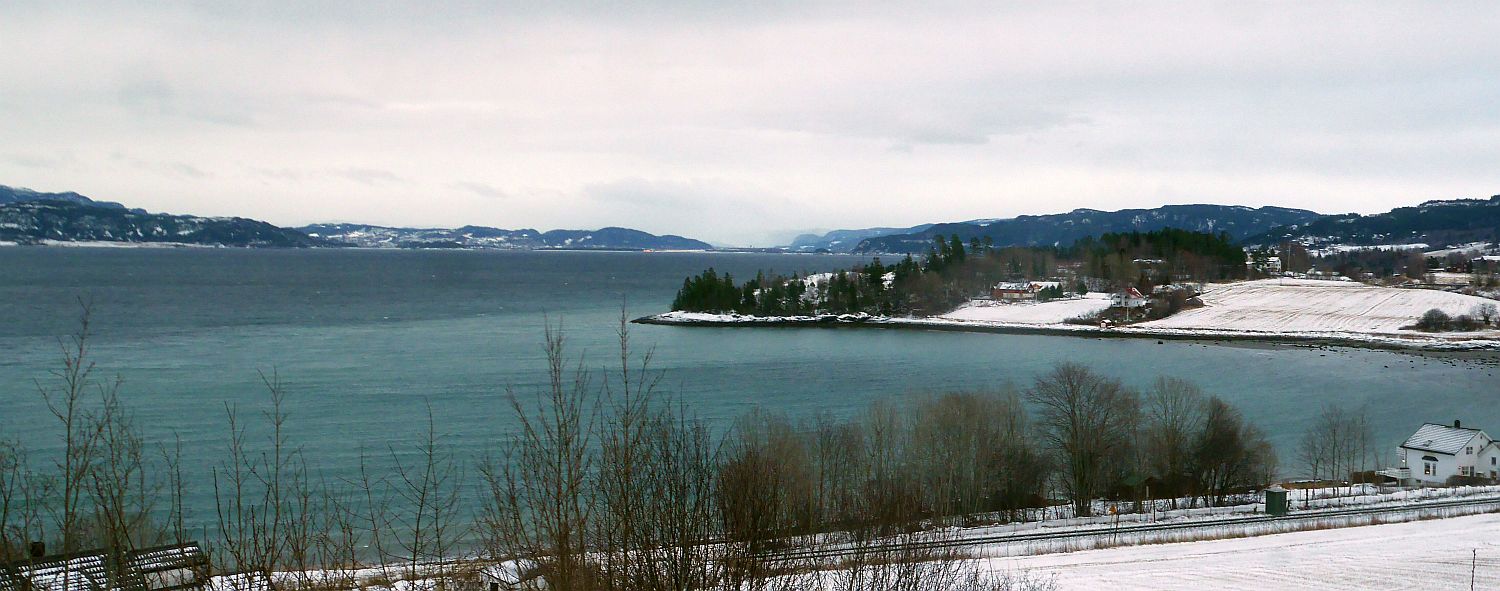
2020 was the Year of the Trench for me (all dug by hand, good training for digging more trenches)! I completed digging a 40m long trench along the “driveway”. 30 years after I planted many trees and bushes along the driveway, some of the trees – ash, elm, lime, beech and birch in particular – had become quite large and my annual vegetable beds were full of roots. I also dug about 60m of trench around my cultivated areas at the Væres Venner Community Garden, this time to keep couch grass (kveke) from reinvading. There’s a steady stream of runners along the path next to the community garden. I really must get round to putting up that sign: “Too much energy? Please come and help”!
I’m writing this on 20th January at 11 am and in an hour from now the temperature will rise above 0C for the first time this year, in stark contrast to December when there was no significant frost until the last few hours before New Year. Unusually, I could do whatever gardening and planting I wanted to throughout December as my daily exercise in between writing. As my garden is on shallow soil and I want both to grow food and have trees around me, it is difficult to get the balance between the two. My solution has been to dig narrow trenches down to the bedrock to physically stop tree roots invading the cultivated areas and robbing water and nutrients. I cleared out some of the older trenches (they are actually useful for trapping autumn leaves which I use for various purposes):
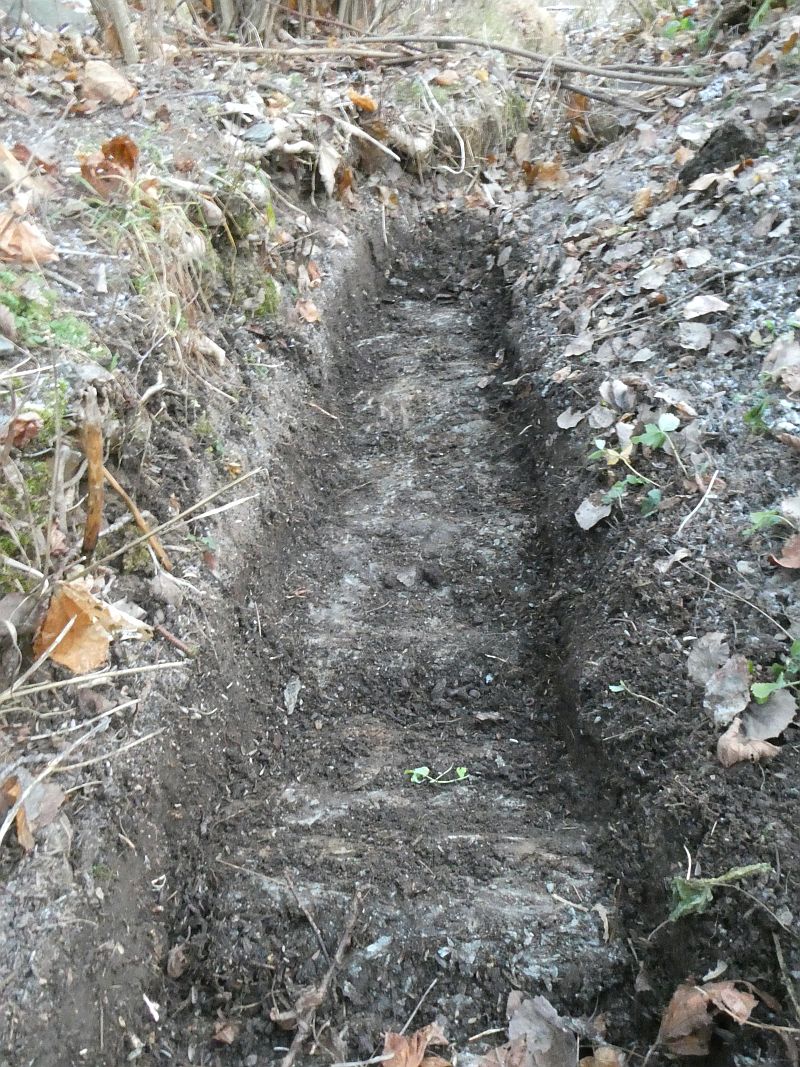
I also dug a new trench along a bed next to the south side of the house where my oldest Hablitzia tamnoides is, filling in again with large stones and using the good soil in creating a new bed for perennial woodlanders on what used to be the “lawn” and also for filling my one and only a raised bed. 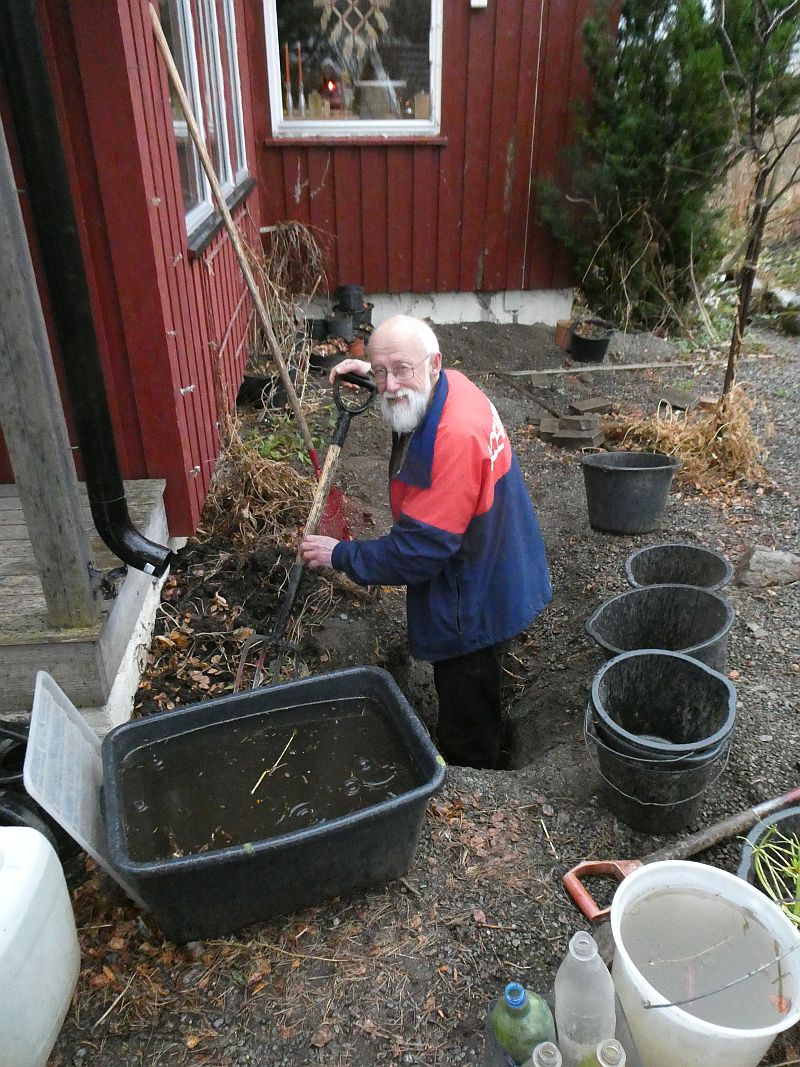

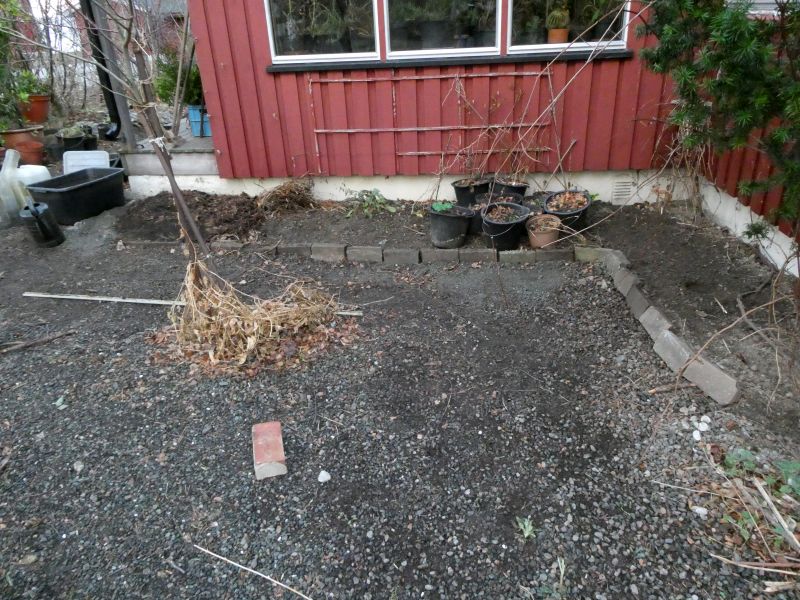
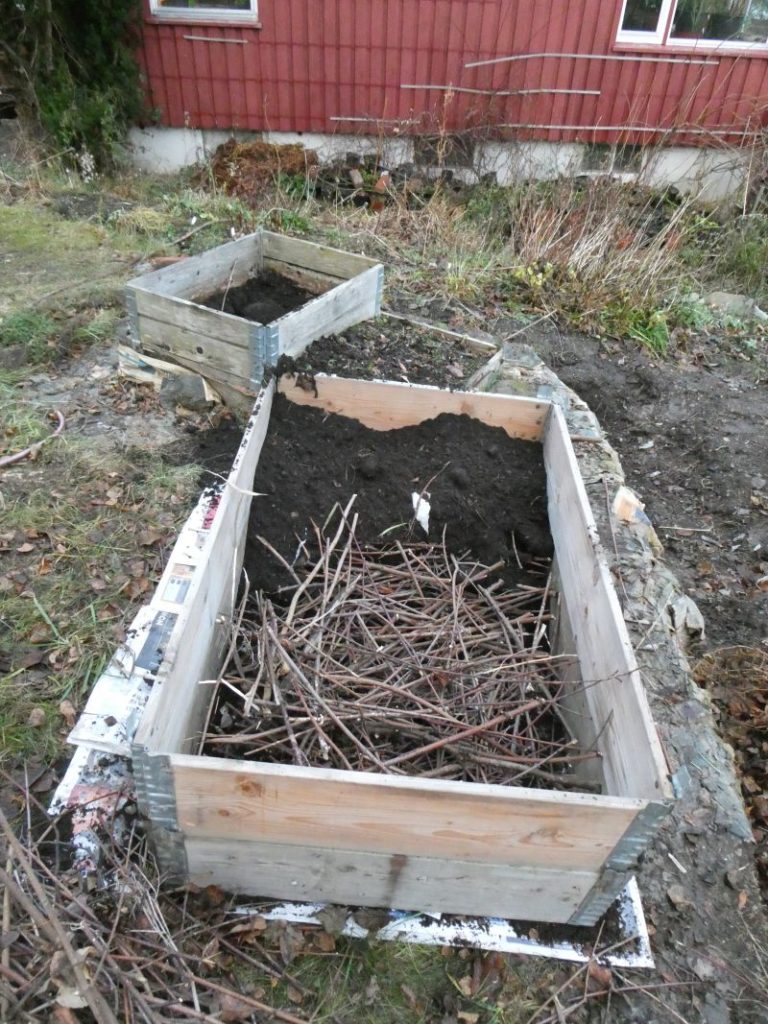
Here the trench is has been infilled with stones and the edging stones have been replaced. I also cover this bed with leaves and jute sacking as there are a few less winter hardy edibles here and there are also a number of pots underneath too.
I also use this bed along the south side of the house for storing pots with plants that haven’t found a permanent place yet or are on their way to the community garden.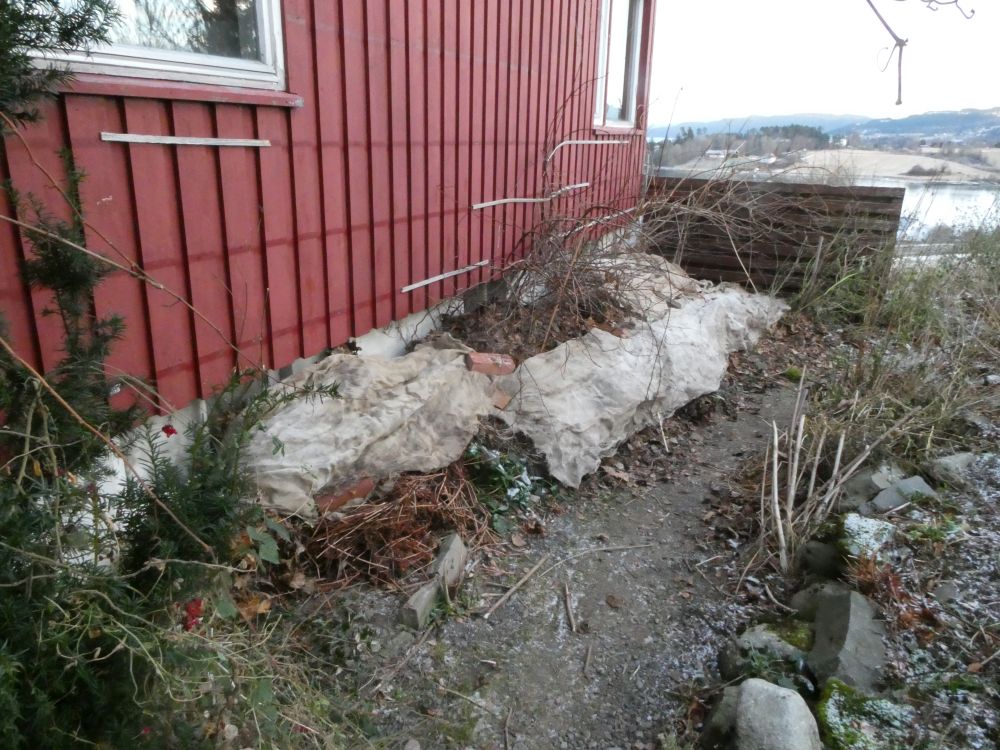 …and finally, I always cover the sea kale (Crambe maritima) bed with leaves and jute:
…and finally, I always cover the sea kale (Crambe maritima) bed with leaves and jute:
This bucket was planted in the autumn and stored until now in the cellar. Within a few days of bringing it up into my living room there are usable shoots. Garlic bulbil shoots are seen behind.
Nowadays, I LOVE the taste of dandelion although in my youth I found it so bitter that I couldn’t understand why anyone would want to eat it. I think the reason is a combination of giving up eating sugar and getting accustomed to eating bitter plants. In addition, nobody ate a dandelion salad alone. The following box from my book describes various methods og de-bitterizing dandelions if you want to benefit from one of the most nutritious and valuable plants on the planet but find the taste too bitter:
A gallery of pictures of tubers and roots which were harvested in December when I had a blog-free month!
It wasn’t until the last day of December towards midnight that the air temperature finally sank significantly below zero (C), an almost frost free winter month is becoming common up here. However, since New Year it hasn’t been above zero and today was the coldest yet with “sea smoke” forming on the other side of the fjord where it was maybe 5C colder. Due to the wind blowing from the east across the fjord, the air temperature increases due to the relatively warm water. Makes for a nice view from the office now that the sun is also back now.

